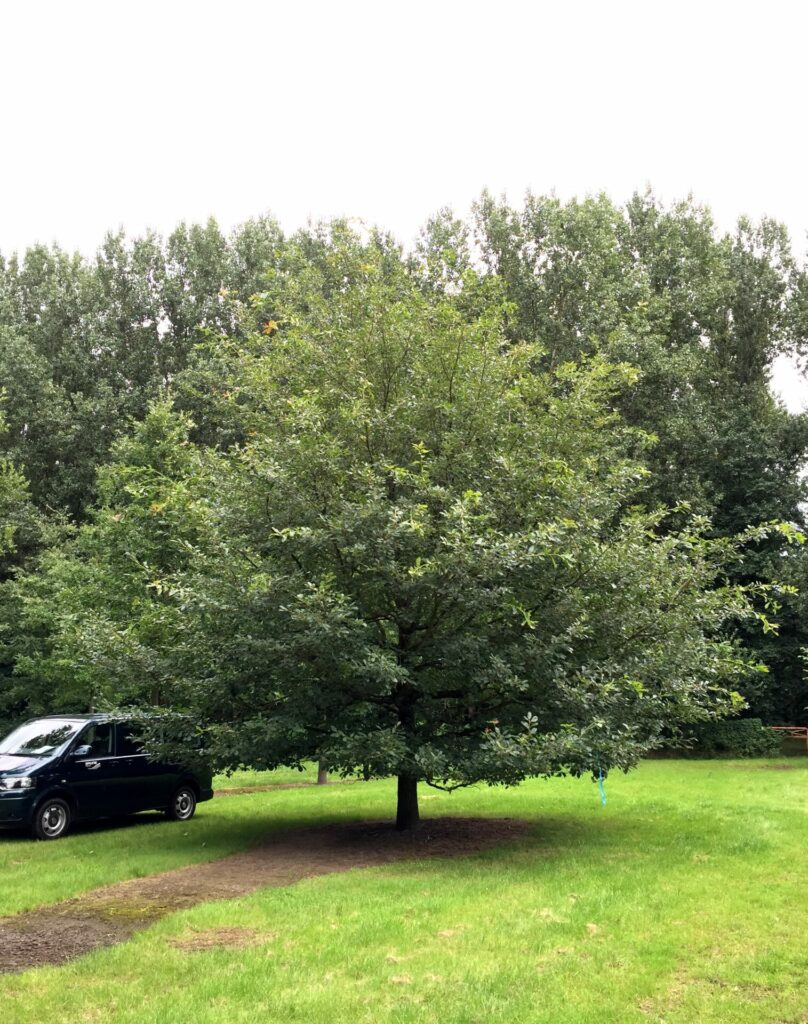Quercus petraea
The trees grow to about 40m high and around 25m wide. The bark is a deep grey-brown colour. When old, the bark is beautifully grooved with longitudinal cracks. The Sessile Oak is deciduous. The name winter oak refers to Quercus petraea’s ability to retain its foliage well into the winter when dry. The leaves are glossy dark green and leathery in texture, they are about 10cm long and about 7cm wide. The underside of the leaves is lighter coloured. The leaf margin is more evenly serrated than that of Quercus robur. The leaves are short-stalked.
The sessile oak is monoecious, the inconspicuous flowers appear in May. The acorns are formed in summer and sit in clusters, almost sessile, on the branches, hence the name cluster oak. The acorns are collected especially by the jay and buried as a winter supply, and this is how he spreads the oaks. Quercus petraea means that this oak grows on stony ground, so it is not very demanding on the soil. It can be dry, sandy to loamy-acidic, but also slightly alkaline. It develops a strong taproot, the fine root system is extensive and heart-shaped. Sunny to slightly shady locations in humid areas are preferred.






